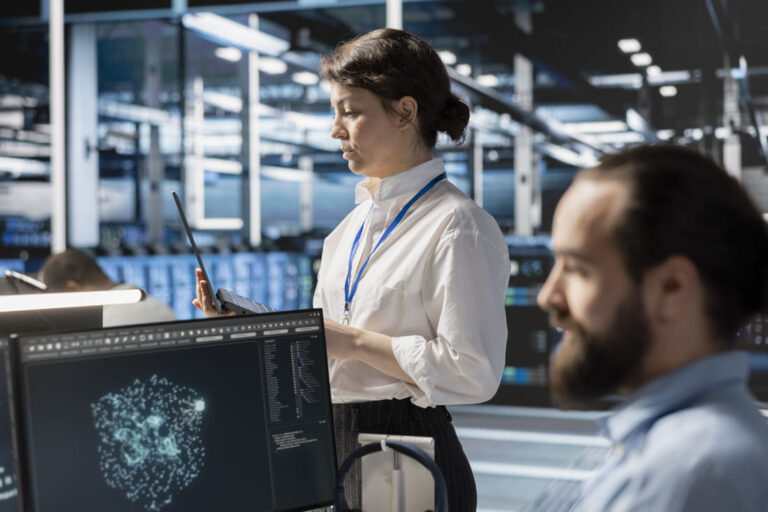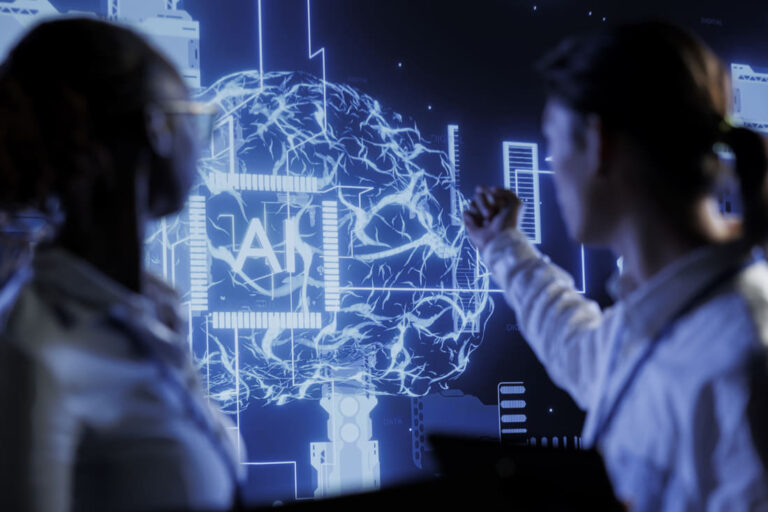Did you still think artificial intelligence (AI) was something of the future? Well, it's here, and all disciplines benefit from its various uses. AI has become an indispensable tool in laboratories and research centers from all over the world thanks to its ability to analyze millions of data in seconds.
But why is it causing such a stir? The answer is simple.: Science generates data at a dizzying pace, and AI is the perfect ally to process it., find patterns and to make predictions that once seemed impossible.
Tabla de contenidos
Why is AI transforming science?
Scientific advancements relied on time, trial and error, and a lot of manual labor. AI is a game changer because:
- Accelerates processes: An analysis that used to take months can now be completed in hours.
- Reduce errors: Algorithms can detect inconsistencies that would otherwise go unnoticed at first glance.
- Opens new questionsBy identifying hidden patterns, AI is empowering scientists to explore previously unimaginable paths.
Of course, it doesn't replace scientists, but rather helps them become more efficient. And the best part is that it's already being applied in multiple areas of knowledge.
Main uses of AI in scientific disciplines
Let's see how artificial intelligence is making its mark in different fields:
AI in biology and genetics
Can you imagine predicting how a protein folds in a matter of seconds? With AI models, this is already a reality. Computational biology has taken a giant leap forward thanks to these tools, which allow to accelerate the development of new drugs and therapies personalized.
Furthermore, in genetics, AI is used to analyze DNA sequences and detect mutations associated with diseasesThis opens the door to more precise diagnoses and treatments tailored to each patient.
AI in medicine
The medicine It is, without a doubt, one of the areas where AI shines the brightest. From algorithms that They analyze X-rays with greater precision than the human eye., to systems capable of predicting disease outbreaks, the applications are endless.
A clear example is the use of the AI for early detection of breast cancerA piece of news that went around the world a few months ago.
AI in physics
For example, in astrophysics algorithms are used to analyze huge amounts of telescope data and detect phenomena that could go unnoticed, such as exoplanets or weak cosmic signals.
In particle physics, AI is used to classify subatomic events and find patterns in accelerator collisions. Basically, helps to better understand the secrets of the universe…and all faster than we could imagine!
Uses of AI in other sciences
The impact of AI is not limited to the most familiar areas. In environmental sciences, for example, it is used to model climate change and predict natural disasters. In chemistry, it helps design new materials with specific properties. Even in archaeology, it is used to reconstruct remains and decipher ancient texts.
The list grows daily, as each discipline finds creative ways to integrate these technologies.
Challenges and opportunities of using AI in science
Although AI opens a world full of possibilities, also poses challenges. Among them:
- Ethics and transparencyHow can we ensure that an algorithm's decisions are understandable and fair?
- Data qualityAI is only as good as the information it's trained on. Incomplete or biased data can lead to erroneous conclusions.
- Unequal access: Not all laboratories have the same technological infrastructure, which can create gaps in research.
Still, the opportunities far outweigh the challenges. AI It does not replace the creativity and critical thinking of scientists., but it does free up time and energy to focus on what matters most: discovering, innovating, and transforming our future.
And best of all: This is just the beginning. Ready to be part of this revolution? In Maxymia We will help you take the first step.


